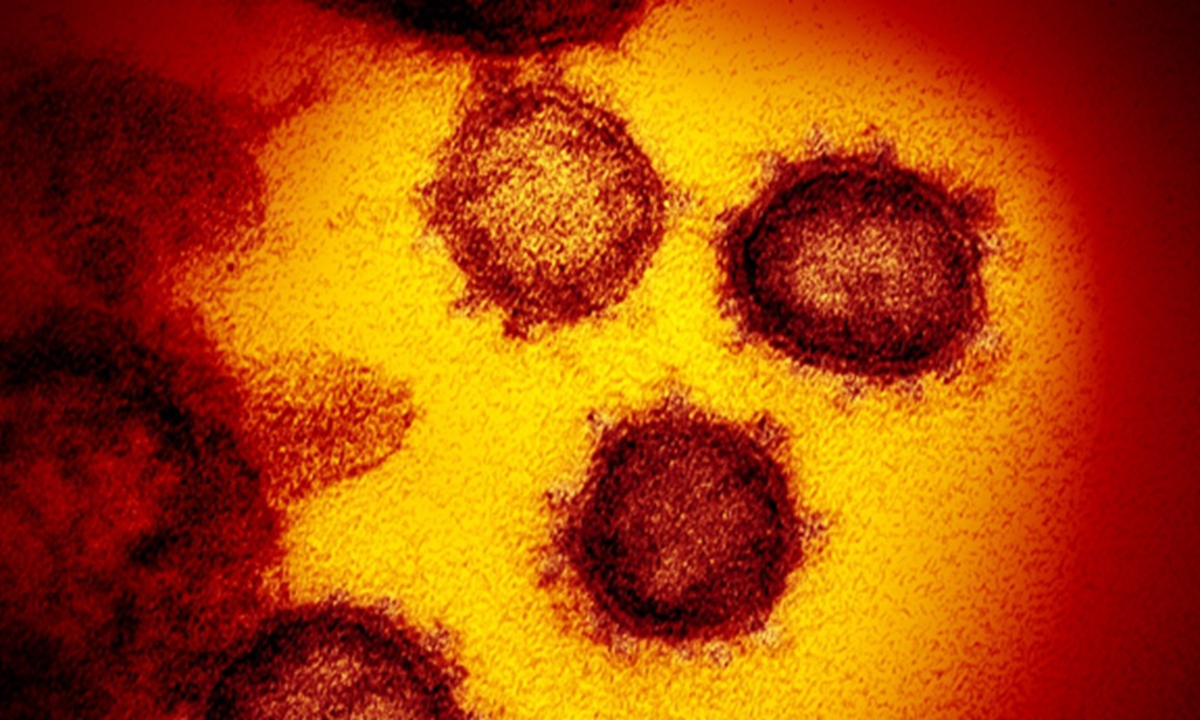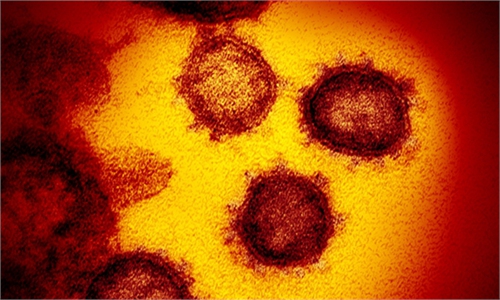Scientists stress multiple potential locations as natural reservoir of novel coronavirus

Photo: VCG
Nine scientists in China published an article on Friday, saying that there are multiple potential locations of the natural reservoir of the novel coronavirus, and the city of Wuhan, which first reported the COVID-19 outbreak in China, might be far from the place of origins and was already at a high risk of importing the novel coronavirus through its cold-chain cargo arrivals from other parts of the world before the pandemic.
The article, titled Tracing the origin of SARS-CoV-2: lessons learned from the past, was published on ChinaXiv, a Chinese open repository for scientific research. It was co-authored by scientists from the Chinese Academy of Sciences (CAS) including Wang Qihui and Shi Yi, professors from the CAS Key Laboratory of Pathogen Microbiology and Immunology with the Institute of Microbiology, Gao Fu, director of the Chinese Center for Disease Control and Prevention, and Tong Yigang, co-leader of the WHO-China joint expert team's animals and environment group and professor at Beijing University of Chemical Technology. The authors also include one British scholar, Alice C. Hughes, from the Center for Integrative Conservation in Xishuangbanna Tropical Botanical Garden under the CAS.
The article points out that the location of the first outbreak might be far from the place of origins and origins tracing must not rush to a conclusion before accumulating sufficient evidence.
Take HIV as an example: HIV was believed to have originated in the US when it was first identified in the 1980s. Since then, scientists and health workers have become increasingly aware of HIV and officially recognized AIDS as a new infectious disease that affects human. However, subsequent studies discovered a blood sample with HIV taken in 1959 from a man living in Kinshasa in the Democratic Republic of the Congo, which was later confirmed as the first verified case of HIV in Africa. This goes to show that the place where a new infectious disease is first reported may not be the original place of the disease.

Through the lens. Illustration: Liu Rui/GT
The article also noted that to find the progenitor of SARS-CoV-2 in animals, a number of SARS-related CoVs (sarbecoviruses) from around the world have been investigated, including those from southern China, Cambodia, Japan, Thailand, Bulgaria and Kenya. All of these sarbecoviruses were discovered from bats of the Rhinolophus genus, making Rhinolophus bats the potential reservoir hosts of SARS-CoV-2.
To determine the potential intermediate hosts of SARS-CoV-2, a number of mammalian species have also been investigated, including domesticated animals (horses, pigs, and cows), companion animals (cats and dogs) and wild animals (bats, pangolins, minks, foxes, and civets). Research suggests among the possible intermediate hosts of the virus, pangolins and minks have attracted more attention than others.
Considering the potential reservoir host and intermediate hosts, the location of the origins of SARS-CoV-2 could be in regions where the distribution of Rhinolophus bats overlaps with that of pangolins, minks, or other potential intermediate hosts, the paper noted.
Hence, the paper concludes that this data suggests multiple locations worldwide where SARS-CoV-2 could have been transmitted from its natural reservoir to intermediate hosts, before even considering other potential hosts and intermediate hosts, which are distributed across the whole world.
Specifically, sarbecovirus spillover from Rhinolophus to pangolins could occur in Southeast Asia, southern China, India, and sub-Saharan Africa, while cross-species transmission from Rhinolophus to minks could occur in southern Europe. Both transmission routes could eventually lead to the adaptation of the viruses and potential human infection.
Therefore, the article suggests surveillance of sarbecoviruses needs to be conducted in Rhinolophus bats, pangolins, and minks from the abovementioned regions before determining the place of origin of SARS-CoV-2.
The article also noted that early SARS-CoV-2 sequencing was inferred to be November 28, 2019, with a 95% CI of [Oct 20, 2019, Dec 9, 2019], indicating that COVID-19 might have originated from an earlier time and outside of the Wuhan seafood market.
Furthermore, by constructing a haplotype network of the early SARS-CoV-2 genomes, the viral sequences can primarily be divided into two lineage clades, among which, the samples isolated from the Huanan Seafood Market in Wuhan mainly cluster with the descendant lineages rather than the ancestral lineages. This also indicates that the source of the CoV in the market was likely imported from elsewhere.
In addition, as a hub of international communication in central China, Wuhan received extensive international flights from cities around the world before the SARS- CoV-2 pandemic. Notably, many of these flights to Wuhan departed from Southeast Asian countries that overlap with the Rhinolophus and pangolin distributions, as well as multiple known sarbecoviruses. Therefore, before the pandemic, Wuhan was already at high risk of importing SARS- CoV-2 through cold-chain cargo arrivals from other parts of the world, the paper said.
Global Times




